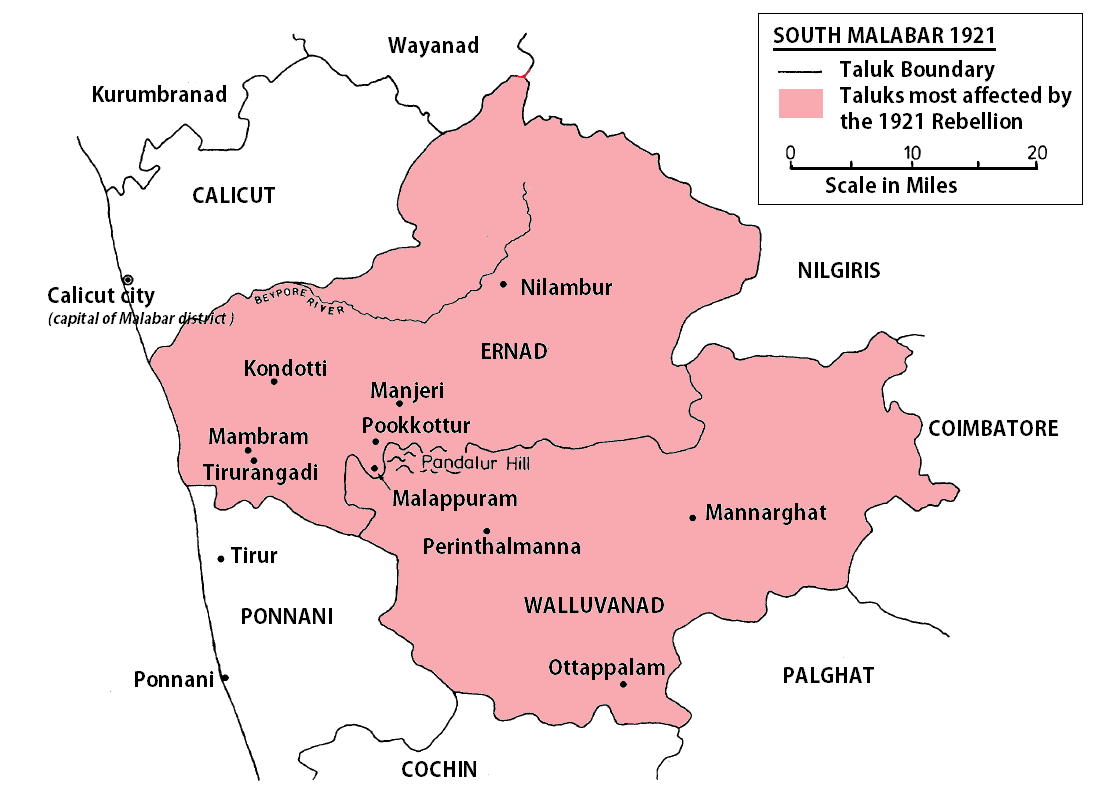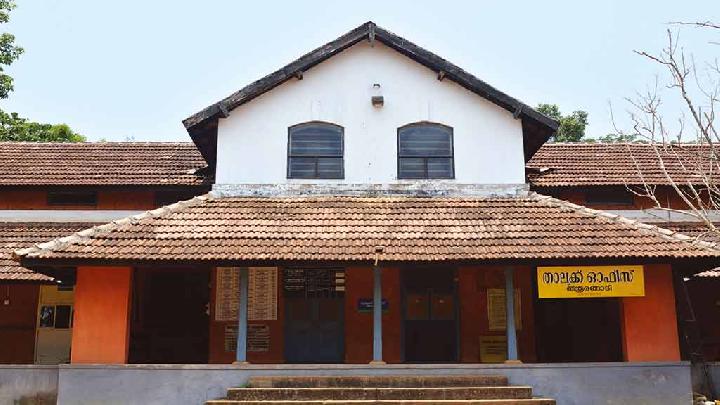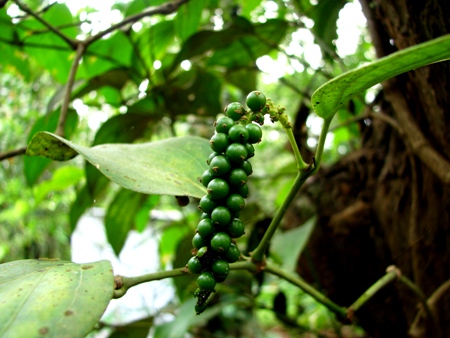|
Tavanur
Thavanur (Tavanur, Thavanoor, or Tavanoor) is a village on the southern bank of the Bharathapuzha, the longest river in Kerala, in the Malappuram District of Kerala State, India. It is located at the border of Tirur and Ponnani Taluks. The Bharathappuzha River separates Thavanur from the towns of Tirunavaya and Kuttippuram in Tirur Taluk. Education Kelappaji College of Agricultural Engineering & Technology campus is located in Thavanur village on the southern bank of Bharathapuzha. Kau.edu. Retrieved on 2013-02-01. History Thavanur village is located on the banks of the river Bharathappuzha. There is a proverb about the place name history that ''Thapassanur'' b ...[...More Info...] [...Related Items...] OR: [Wikipedia] [Google] [Baidu] |
KCAET
The Kelappaji College of Agricultural Engineering and Technology (KCAET), the only Agricultural Engineering college in Kerala, is situated at Tavanur in Malappuram district and is named after the freedom fighter and social reformer Sri K. Kelappan. This institution is part of the Kerala Agricultural University. History In 1956, the National Council for Rural Higher education was set up by the Government of India, which established 14 Rural Institutes all over India from 1956 to 1963 to promote educational development in Agriculture, Engineering, Public Health and Humanities, in rural areas. The Rural Institute, Tavanur, in then Palakkad district was established in 1963. Shri. K. Kelappan, popularly known as Kerala Gandhi, who had already established a high school, The Sarvodayapuram Post Basic School in Tavanur, had influenced the then Central Government in establishing this prestigious Institute for higher education in this village. Shri. K. Kelappan and the local dignitar ... [...More Info...] [...Related Items...] OR: [Wikipedia] [Google] [Baidu] |
Malappuram District
Malappuram (), is one of the List of districts of Kerala, 14 districts in the States and union territories of India, Indian state of Kerala, with a coastline of . The most populous district of Kerala, Malappuram is home to around 13% of the total population of the state. The district was formed on 16 June 1969, spanning an area of about . It is the third-largest district of Kerala by area. It is bounded by Western Ghats and the Arabian Sea on either side. The district is divided into seven Tehsil, Taluks: Eranad Taluk, Eranad, Kondotty Taluk, Kondotty, Nilambur#Nilambur Taluk, Nilambur, Perinthalmanna taluk, Perinthalmanna, Ponnani taluk, Ponnani, Tirur Taluk, Tirur, and Tirurangadi Taluk Office, Tirurangadi. Malayalam is the most spoken language. The district has witnessed significant emigration, especially to the Arab states of the Persian Gulf during the Kerala Gulf diaspora#The Gulf Boom, Gulf Boom of the 1970s and early 1980s, and its economy depends significantly on remitt ... [...More Info...] [...Related Items...] OR: [Wikipedia] [Google] [Baidu] |
Tirur Taluk
Tirur Taluk comes under Tirur revenue division in Malappuram district in the Indian state of Kerala. Its headquarters is the town of Tirur. Tirur Taluk contains four municipalities - Tanur, Tirur, Kottakkal, and Valanchery. Most of the administrative offices are located in the Mini-Civil Stations at Tirur, Kuttippuram, and Tanur. Most of the villages in present-day Tirur Taluk were parts of the medieval Kingdom of Tanur (''Vettathunadu''). The port of Tanur was an important port town in the southwestern coast of India during medieval period. History Tirur Taluk was formed on 1 November 1957 by carving 43 villages out of the Old Ponnani taluk and 30 villages out of the Old Eranad Taluk. Tirur, Tanur, and Kuttippuram Revenue blocks were taken from the Old Ponnani taluk while the Revenue blocks of Tirurangadi and Vengara were taken out of the Old Eranad Taluk. At that time, Tirur Taluk was the largest coastal Taluk in Kerala which had contained the entire coastal belt w ... [...More Info...] [...Related Items...] OR: [Wikipedia] [Google] [Baidu] |
Indian Union Muslim League
Indian Union Muslim League (abbreviated as the IUML or Muslim League) is a political party primarily based in Kerala. It is recognised as a List of political parties in India, State Party in Kerala by the Election Commission of India. After the Partition of India, the first Council of the Indian segment of the All-India Muslim League was held on 10 March 1948 at the south Indian city of Madras (now Chennai).Wright, T. (1966). The Muslim League in South India since Independence: A Study in Minority Group Political Strategies. ''The American Political Science Review,'' ''60''(3), 579-599. The party renamed itself as the 'Indian Union Muslim League' and adopted a new constitution on 1 September 1951. IUML is a major member of the opposition United Democratic Front (Kerala), United Democratic Front, the Indian National Congress, INC-led pre-poll state level alliance in Kerala.James Chiriyankandath (1996) Changing Muslim politics in Kerala: identity, interests and political strategie ... [...More Info...] [...Related Items...] OR: [Wikipedia] [Google] [Baidu] |
Malabar Rebellion
The Malabar rebellion of 1921 (also called Moplah rebellion, and Mappila rebellion, Malayalam: ''malabār kalāpam'') started as a resistance against the British colonial rule in certain places in the southern part of old Malabar district of present-day Kerala. The popular uprising was also against the prevailing feudal system controlled by Hindus. For the mappila side, the rebellion was primarily a peasant revolt against the colonial government. During the uprising, the rebels attacked various symbols and institutions of the colonial state, such as telegraph lines, train stations, courts and post offices. There were also a series of clashes between the Mappila Muslims, Mappila Muslims and the Hindu landlords, the latter supported by the British colonial government, throughout the 19th and early 20th centuries. The heavy-handed suppression of the Khilafat Movement by the colonial government was met by resistance in the Eranad and Perinthalmanna taluk, Valluvanad ''taluks'' of M ... [...More Info...] [...Related Items...] OR: [Wikipedia] [Google] [Baidu] |
Indian National Congress
The Indian National Congress (INC), colloquially the Congress Party, or simply the Congress, is a political parties in India, political party in India with deep roots in most regions of India. Founded on 28 December 1885, it was the first modern Nationalism, nationalist movement to emerge in the British Empire in Asia and Africa. From the late 19th century, and especially after 1920, under the leadership of Mahatma Gandhi, the Congress became the principal leader of the Indian independence movement. The Congress led India to independence from the United Kingdom, and significantly influenced other Decolonization, anti-colonial nationalist movements in the British Empire. The INC is a "big tent" party that has been described as sitting on the Centrism, centre of the Indian politics, Indian political spectrum. The party held its first session in 1885 in Mumbai, Bombay where Womesh Chunder Bonnerjee, W.C. Bonnerjee presided over it. After Indian independence in 1947, Congress eme ... [...More Info...] [...Related Items...] OR: [Wikipedia] [Google] [Baidu] |
Nambudiri
The Nambudiri (), also transliterated as Nampoothiri, Nambūdiri, Namboodiri, Namboothiri, Namboodri, Namboori, and Nampūtiri, are a Malayali Brahmin caste, native to what is now the state of Kerala, India, where they constituted part of the traditional feudal elite. Headed by the Azhvanchery Thamprakkal , Azhvanchery Thamprakkal Samrāṭ, the Nambudiris were the highest ranking caste in Kerala. They owned a large portion of the land in the region of Malabar District, and together with the Nair monarchs of Kerala, the Nambudiris formed the landed aristocracy known as the Jenmimar, until the Land reform in Kerala, Kerala Land Reforms starting in 1957. The Nambudiris have traditionally lived in Tharavad, ancestral homes known as Illams and have been described by anthropologist Joan Mencher as, "A wealthy, aristocratic landed caste of the highest ritual and secular rank." Venerated as the carriers of the Sanskrit language and ancient Vedas, Vedic culture, the Nambudiris held m ... [...More Info...] [...Related Items...] OR: [Wikipedia] [Google] [Baidu] |
Tirurangadi Taluk Office
The Tirurangadi Taluk Office, also known as Hajur Kacheri, is a historic building located in Tirurangadi Talk of Malappuram District in the Indian state of Kerala. It houses the Tirurangadi Taluk Office since the post-independence Malabar District or British-era Madras Presidency. The Taluk office, which was once the Hajur Kacheri (Huzur Office) under the British, was one of the major administrative centers of the British government in Malabar region. The building also functioned as the headquarters of a short-lived Khilafat government during the rebellion. History Tirurangadi was the capital of Cheranad taluk under the British Raj, which was the epicenter of the Khilafat movement and Malabar Rebellion (Moplah revolt) in 1921. The building was known as the Hajur Kacheri (Huzur Office) under the British, and was one of the major administrative centers of the post-independence British-era Madras Presidency. The building also functioned as the headquarters of a short-lived Khila ... [...More Info...] [...Related Items...] OR: [Wikipedia] [Google] [Baidu] |
Zamorin Of Calicut
The Samoothiri (Anglicised as Zamorin; Malayalam: , , Arabic: ''Sāmuri'', Portuguese: ''Samorim'', Dutch: ''Samorijn'', Chinese: ''Shamitihsi''Ma Huan's Ying-yai Sheng-lan: 'The Overall Survey of the Ocean's Shores' 433 Translated and Edited by J. V. G. Mills. Cambridge University Press for the Hakluyt Society (1970).) was the title of the erstwhile ruler and monarch of the Calicut kingdom in the South Malabar region of India. Originating from the former feudal kingdom of Nediyiruppu Swaroopam, the Samoothiris and their vassal kings from Nilambur Kovilakam established Calicut as one of the most important trading ports on the southwest coast of India. At the peak of their reign, they ruled over a region extending from Kozhikode Kollam to the forested borders of Panthalayini Kollam (Koyilandy).Varier, M. R. Raghava. "Documents of Investiture Ceremonies" in K. K. N. Kurup, Edit., "India's Naval Traditions". Northern Book Centre, New Delhi, 1997K. V. Krishna Iyer, ''Zamorin ... [...More Info...] [...Related Items...] OR: [Wikipedia] [Google] [Baidu] |
Kingdom Of Tanur
The Kingdom of Tanur (also referred to as Vettathunadu, Vettam, Tanur Swaroopam, and Prakashabhu; or the Kingdom of Light) was a feudal List of feudal states of Kerala, principality on the Malabar Coast of the Indian subcontinent during the Middle Ages. It was governed by the Tanur dynasty, a Hindu ruling family that claimed ''Kshatriya'' status. The kingdom encompassed parts of the coastal ''taluks'' of Tirurangadi, Tirur Taluk, Tirur, and Ponnani taluk, Ponnani in present-day Malappuram district, including locations such as Tanur, Malappuram, Tanur, Tirur (historically known as Trikkandiyur) and Chaliyam. The kingdom also contained the coastal villages of Kadalundi and Chaliyam in the southernmost region of Kozhikode district. The rulers of Vettathunadu were long-standing feudatory, feudatories of the Zamorin of Calicut. With the arrival of the Portuguese on the Malabar Coast, the Vettathunadu kings began to manoeuvre between the Portuguese and the Zamorin. They were among th ... [...More Info...] [...Related Items...] OR: [Wikipedia] [Google] [Baidu] |
Bharathappuzha
The Bharathappuzha ("River of Bhārata"), also known as the Nila River, is a river in the Indian states of Tamil Nadu and Kerala. With a length of 209 km, it is the second longest river that flows through Kerala after the Periyar. It flows through the Palakkad Gap, which is also the largest opening in the Kerala portion of the Western Ghats. The Nila has groomed the culture and life of South Malabar part of Kerala. It is also referred to as the "Peraar" in ancient scripts and documents. River Bharathapuzha is an interstate river and lifeline water source for a population residing in four administrative districts, namely Malappuram and Palakkad districts, and parts of Palakkad-Thrissur district border of Kerala and Coimbatore, and Tiruppur of Tamil Nadu. The fertile Thrissur-Ponnani Kole Wetlands lie on its bank. Etymology The river originates in Tamil Nadu, Thirumoorthy Dam. Once it enters Kerala, it gets significance and has five names - Bharathappuzha, Ponnani Riv ... [...More Info...] [...Related Items...] OR: [Wikipedia] [Google] [Baidu] |







